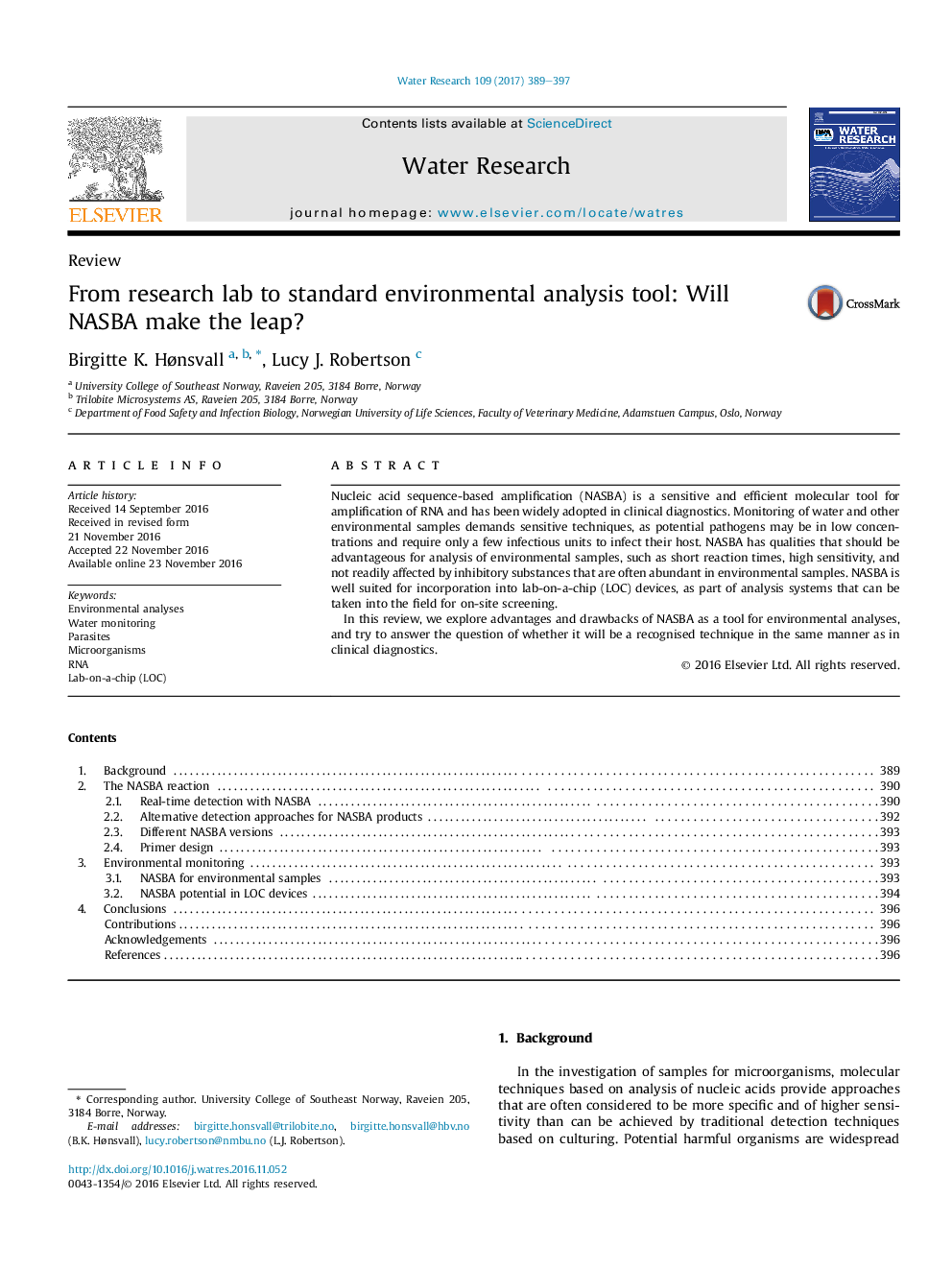| Article ID | Journal | Published Year | Pages | File Type |
|---|---|---|---|---|
| 5759504 | Water Research | 2017 | 9 Pages |
â¢Use of NASBA for analysis of environmental samples is reviewed.â¢Established in clinical diagnostics, but not environmental analyses.â¢Several qualities relevant for environmental analysis.â¢Also several challenges (price, development, false positives).â¢Well suited to incorporation into LOC systems.
Nucleic acid sequence-based amplification (NASBA) is a sensitive and efficient molecular tool for amplification of RNA and has been widely adopted in clinical diagnostics. Monitoring of water and other environmental samples demands sensitive techniques, as potential pathogens may be in low concentrations and require only a few infectious units to infect their host. NASBA has qualities that should be advantageous for analysis of environmental samples, such as short reaction times, high sensitivity, and not readily affected by inhibitory substances that are often abundant in environmental samples. NASBA is well suited for incorporation into lab-on-a-chip (LOC) devices, as part of analysis systems that can be taken into the field for on-site screening.In this review, we explore advantages and drawbacks of NASBA as a tool for environmental analyses, and try to answer the question of whether it will be a recognised technique in the same manner as in clinical diagnostics.
